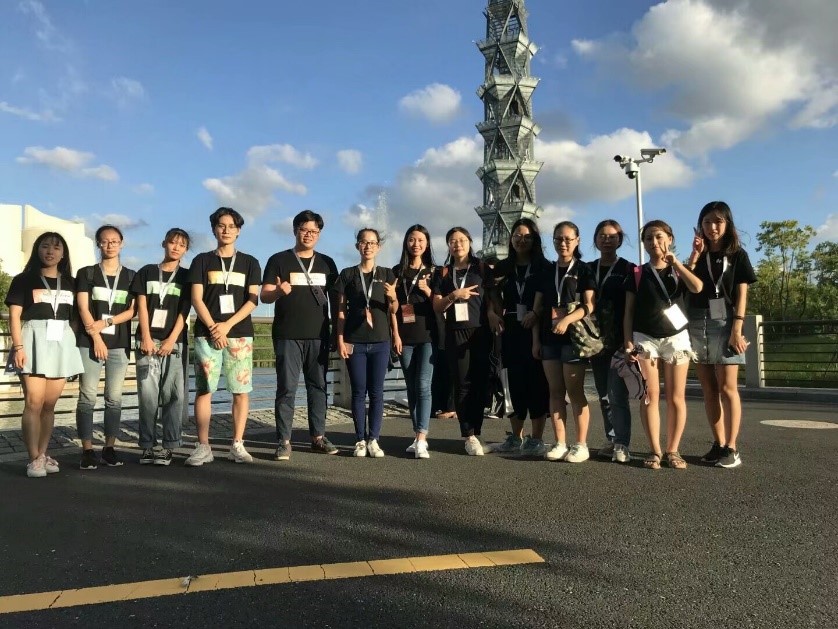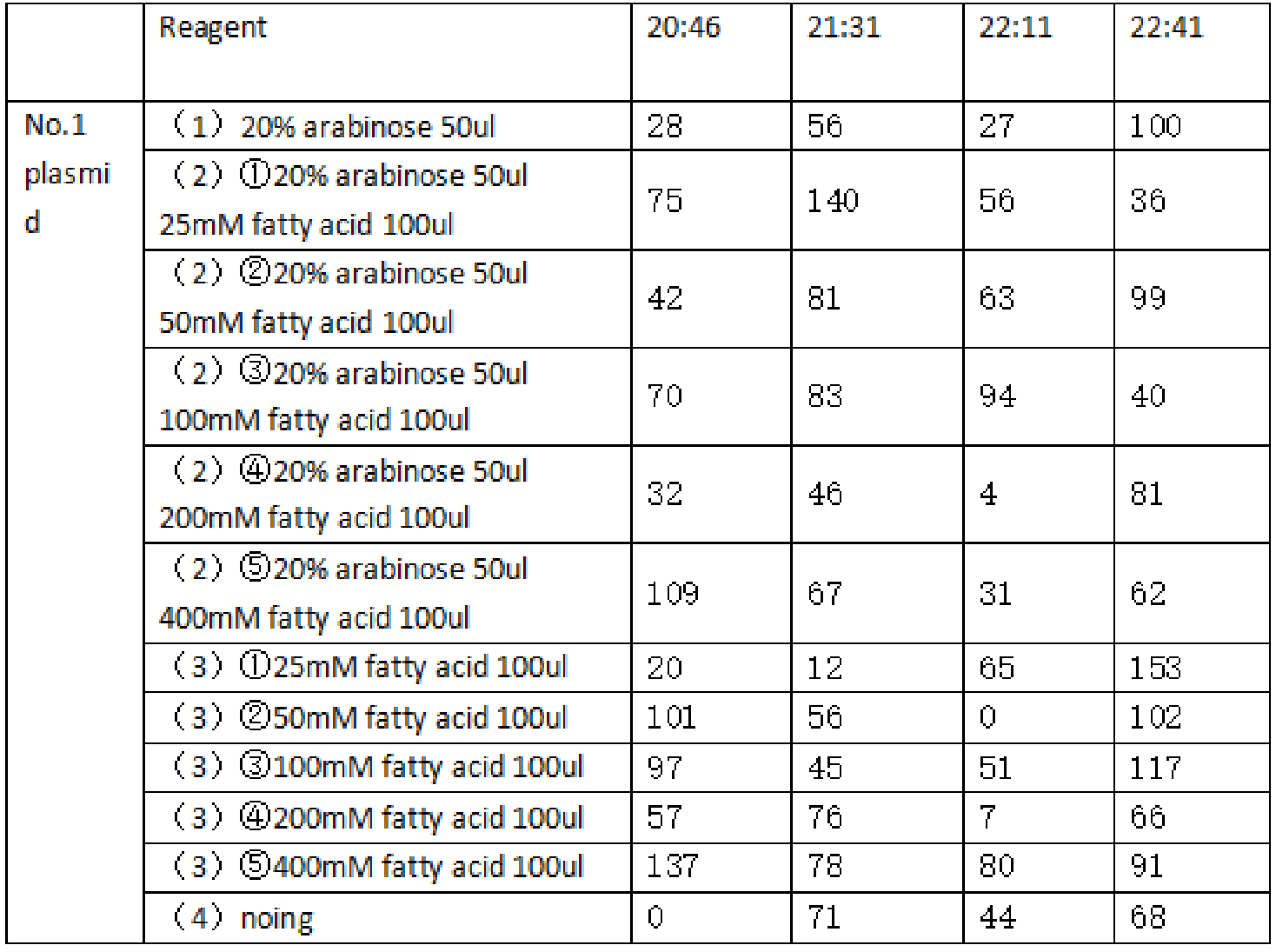| Line 263: | Line 263: | ||
<span style="color: black;"><strong>SIAT-SCIE</strong><a href="https://2018.igem.org/Team:SIAT-SCIE/Collaborations"> about colon cancer;</span><br> | <span style="color: black;"><strong>SIAT-SCIE</strong><a href="https://2018.igem.org/Team:SIAT-SCIE/Collaborations"> about colon cancer;</span><br> | ||
<span style="color: black;"><strong>SMU-iGEM</strong><a href="https://2018.igem.org/Team:SIAT-SCIE/Collaborations"> about the usage of antibiotics;</span><br> | <span style="color: black;"><strong>SMU-iGEM</strong><a href="https://2018.igem.org/Team:SIAT-SCIE/Collaborations"> about the usage of antibiotics;</span><br> | ||
| − | <span style="color: black;">< | + | <span style="color: black;"><strong><a href="https://2018.igem.org/Team:UESTC-Software/Collaborations"> UESTC-Software</strong>about the utilization and requirments of databases. </span><br> |
Revision as of 19:50, 17 October 2018
Collaborations
Nobody can do the synthesis biology and complete the whole iGEM competition on their own.
We had lots of contact with the other iGEM teams in China and even teams from other countries,
via e-mail, wechat, online confereces
and different meet-ups we attended in this year.
We are glad to mention those friendly iGEMers we met in this year and show co-operation details on this page.
Collaboration with FJNU-China
We have used the E.coli (DH5α) and Yeast Cen.PK2-1D to help FJNU-China to test the inhibitory effect of PLA (Poly lactic acid) in common growth circumstances with different concentrations. And we would show the broad-spectrum antibacterial performance results in the below. What’s more, the FJNU-China team have provide tube of water sample from the Fujian province, China, and then, we would test our detection chasis with this samples.
Our two teams often communicate with each other over the summer, during which we exchanged experience and interesting things through chat tools in daily life and establish a good relationship.


Collaboration with XMU-China
We offered XMU-China the information of our team, including team introduction, project description, etc, which will be recorde on Newsletter edited by XMU-China. Through this platform, more people could learn about our projects and we have more opportunities to communicate and cooperate with the external world.
Collaboration with NKU_CHINA
We offeredNKU_China our constructive detecting chasis to test the minimal inhibitory concentration , MIC, in different labs. We can get more information about this detecting chasis tolerance through this testing that the detecting chasis can work at a Tc concentration of 0 to 200 ug/ml. And this collaboration results would help us verified the function of the gene tetA, which would provide a tetracycline resistance to the original E.coli, and help us better to improve our detecting chasis in the project.
Near the end of the 2018 iGEM competition, we have borrowed the HPLC machine to measure the content of tetracycline in the water samples and degraded solutions.
In this year, TUST-China have a close contacting with the team NKU-China in many aspects, not only in the experiments but also sharing some interesting failure bugs during the project going and established a good relationship.


Collaboration with XJTU-China
We have exchanged our team logo with the team XJTU-China, and we draw their chemical structure formula with the E.coli including GFP reporter on the petri dishes, and then we have invited some other students into the lab to draw some logos on the dishes. We want to let more people close to the biology.

Collaboration with Peking
We have attended the synthesis biology lessons in Peking University in the winter holiday. And in this holiday meeting, all of us got plenty of molecular knowledge and those good for us to continue our project in next time.

Collaboration with Jilin_China
We are invited to attend CCiC in Shanghai. There, we met and exchanged ideas with the members from team Jilin_China. We introduced our projects and built up mutual facilitation with each others. After that, we got contact with them to discuss our projects and possible collaborations we could do.
Changchun, Jilin is a typical industrial city with lots of heavy industry factories and biological product factories, which could provide us with polluted water for tetracycline detecting and degradation. If we want to detect the antibiotic pollution situation in this area, the team of Jilin_China could provide the local water samples for us to testing. And then, we can use the water sample to measure the tetracycline content with HPLC method.
This year, Jilin_China focuses on SynRT, they did a site-directed mutagenesis of superfolder GFP in iGEM part registry(BBa_I7469616), sfGFP(BbsI free). They would like to construct a standard partof sfGFP(BbsI free)(BBa_K2541401) However, after several trials, they failed in ligation, we helped them to address this scientific barrier. We sent them the plasmid for fluorescence measurement and primers for sfGFP(BbsI free)to us. Finally, we finished the construction and offering useful suggestions in ligation. After the construction, we sent the correctly sequenced part to them.
They really appreciated that we did such a favor in an important experiment. Hopefully, we can maintain this friendship for a long term and work together synthetic biology field.


Collaboration with OUC-China
OUC-China 2017 draw a comic book about synthetic biology and they have shared us with the comic books in two language, including the English one and the Chinese versions. We have took this two versions into the high school to give them a special interesting lesson with the other two teams, NKU-China and Tianjin- iGEM. It is a recipient comic book for a high school to get in touch with synthesis biology with weak biology basics. Click here to get more information about the high school tour.


Collaboration with BUCT-China
We received an invitation from BUCT-China during the process of the experiment. We get some information from the E-mail that the laboratory of BUCT-China team lacked the experience to measure the fluorescence value and they could not accurately control the time of fluorescence detection, and the lab was short of the 96-well plates for fluorescence detection. So BUCT-China sends us the collaboration letter. Our laboratory has enough resources to complete this experiment, so BUCT-China has designed a quantitative experiment and entrusted us to help measure the fluorescence value under different concentration gradient conditions of fatty acids.
The collaboration experiment have designed a total of four control groups. The first one is as a control group that only add 50 ul arabinose solution with 20% concentration. And the second group added 50ul Arabic sugar solution of 20%, and 100ul fat solution of different concentrations was added one hour later. The concentrations of fatty acids were 25mM, 50mM, 100mM, 200mM and 400mM, respectively. We need to add different gradients fatty acid solutions in the third group, and the concentration was the same as that of the second group, while the fourth group was the blank control group.
The fluorescence values measured after 8 hours of culture were as follows:
We have sent those data to the team BUCT-China to analyse.
After testing the effect of different fatty acids on the fluorescence amount of chassis, we Shared our completed Tetracycline HPLC Protocol with them, and it is also hoped that BUCT can help us take water samples nearby their campus and measure tetracycline concentration in water.
After several days of measurement, we got the results of tetracycline content measured by BUCT-China in waters near BUCT campus.

It can be seen that the tetracycline content in Beijing area river is keeping in a low degree, but there still containing some other pollution substance.
We are very grateful for the cooperation of BUCT-China iGEMer, and we hope we our teams can keep in touch closely in the future.
Collaboration with iGEM Tec CEM 2018
In this year, we have lots of communications with the foreign teams, including the team iGEM Tec CEM 2018. We have participated the song video making with this team. The music video is called “Labs Like You” and is inspired in Maroon 5’s song “Girls Like You”. We want to make this competition more interest with more laughter. It is a better way to improve efficiency to enjoy in what you have done.
The following list is that participated on the collaboration.Enjoy the parts of “Labs Like You” from TUST-China:
You can find the whole music video from the below address: https://www.youtube.com/watch?v=R7vdiGLLJZA
Water Samples:
We want to thanks the following iGEM team list that they have provide water samples from the local rivers to us to detect the tetracycline contents in different areas. And those water samples can help us better to verify the sensitivity of our detection chasis under different concentration of tetracycline.
Tsinghua—From Beijing Province;Jilin_China—From Jilin Province;
FJNU-China—From Fujian Province;
BUCT-China—From Beijing Province;
Questionnaire Surveys:
• We filled in lots of surveys for other iGEM teams, and we hope we can provide useful information to those teams with the Completed questionnaire
XJTU-China about survey on sweetnersTianjin about Circadian rhythms in human body;
SIAT-SCIE about colon cancer;
SMU-iGEM about the usage of antibiotics;
UESTC-Softwareabout the utilization and requirments of databases.






